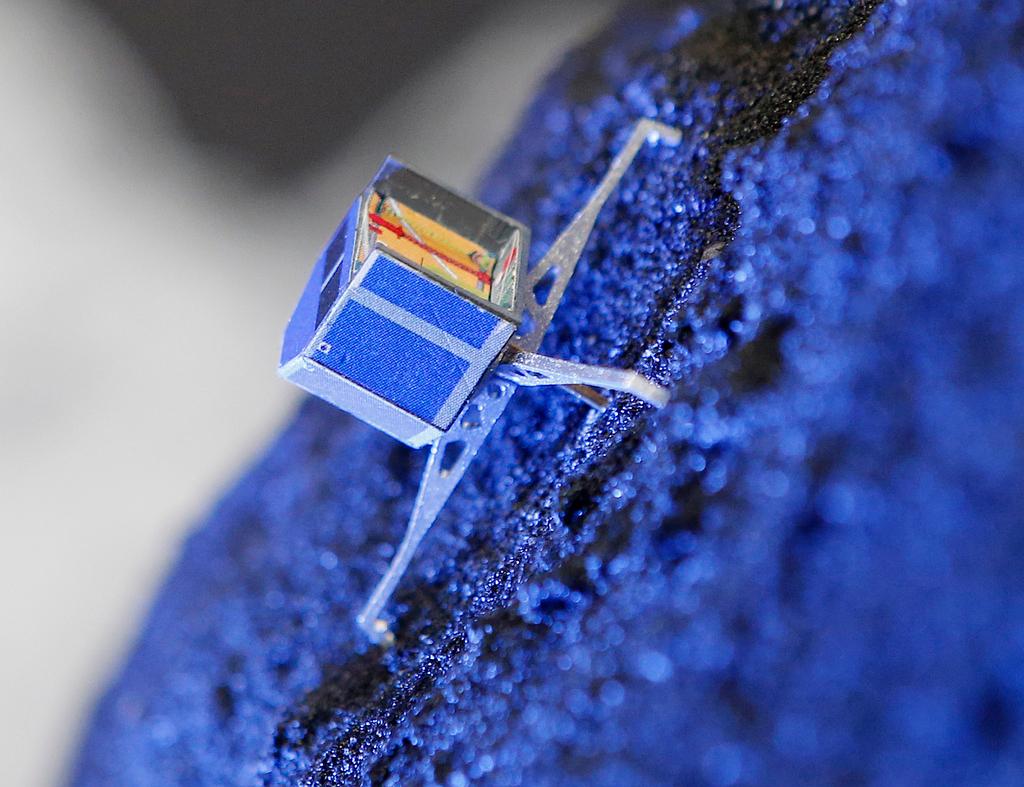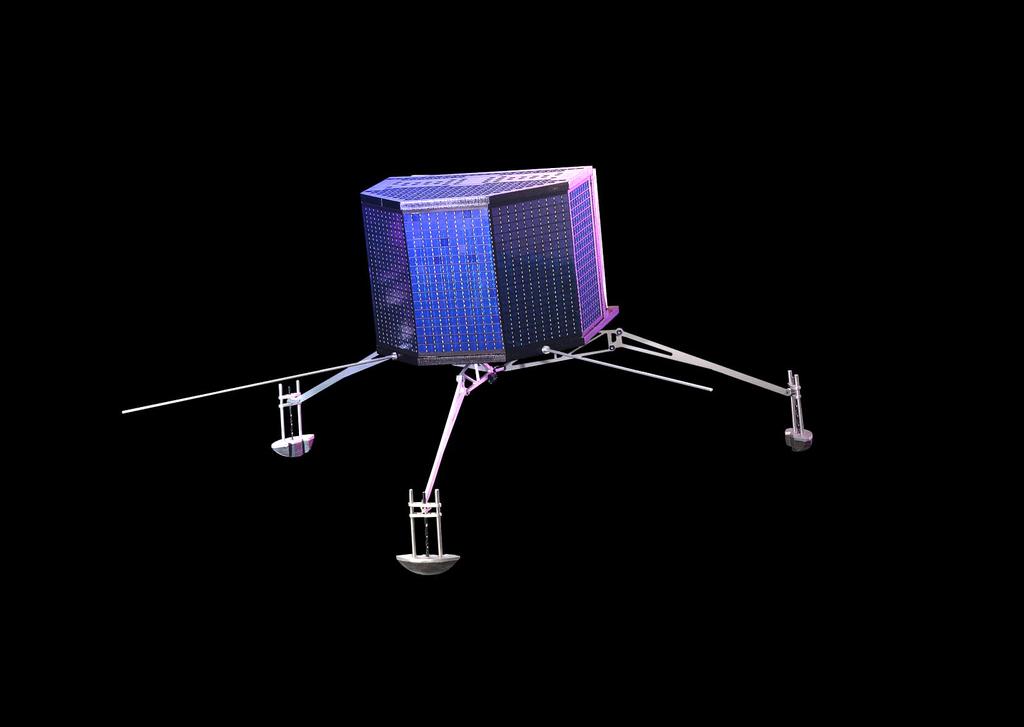Researchers bid dormant Philae farewell

Run-down batteries and harsh conditions mean that Philae, the first spacecraft to successfully land on a comet, has come to the end of its historic mission.
European scientists have given up on re-establishing contact with the robot lander Philae, which made history when it landed on the comet 67P/Churyumov-Gerassimenko, AKA “Chury”, in November 2014.
On Friday, the German Aerospace Centre (DLR) announced that Philae’s solar panels are covered in dust, and that with Chury positioned far from the sun, temperatures have likely plunged too low for the robot to be able to function again.
“Unfortunately, the probability that Philae will re-establish contact with our team at the DLR control centre is practically zero. We will not be sending out further orders,” said Stephan Ulamec, leader of the Philae project at the DLR, in a statement.
“It will be very surprising if we receive a signal now.”
Tough run
Shortly after landing in 2014 and sending some valuable data back to its launcher, the Rosetta spacecraft, Philae when into “hibernation” when its batteries ran down. Unfortunately, with its solar panels stuck in the shadows, the batteries could not be recharged.
Remember! Even with @Philae2014External link dormant @ESA_RosettaExternal link is still going on.#ScienceAintOverYetExternal link we've just begun. Right @mggtTaylorExternal link?
— MUPUS on Philae (@Philae_MUPUS) February 12, 2016External link
Philae was briefly awakened in June 2015 as the comet Chury approached the sun, which gave researchers hope that it would be able to explore further. But since July 9, Philae has not re-established contact with the Rosetta spacecraft, which is in orbit around Chury.
Though it is most likely that Philae has reached the end of its explorations, the Rosetta mission lives on. In addition to continuing to “listen” for signals from Philae, just in case, the launcher will itself land on the comet in September 2016.
I’m still listening and at some point will get close enough to #67PExternal link again to try take images of @Philae2014External link… pic.twitter.com/yTbT4xCBXcExternal link
— ESA Rosetta Mission (@ESA_Rosetta) February 12, 2016External link
Swiss Spectrometers
Rosetta is a mission of the European Space Agency (ESA), in association with NASA. The Philae robot was developed by a consortium directed by the DLR.
Researchers at the University of Bern have been responsible for developing and running the Rosetta mission’s cameras and spectrometers as part of the ROSINA project (Rosetta Orbiter Spectrometer for Ion and Neutral Analysis). The instruments help collect and analyse data about the composition of the comet Chury, including atoms, molecules and ions in the comet’s vapour.

In compliance with the JTI standards
More: SWI swissinfo.ch certified by the Journalism Trust Initiative










You can find an overview of ongoing debates with our journalists here . Please join us!
If you want to start a conversation about a topic raised in this article or want to report factual errors, email us at english@swissinfo.ch.